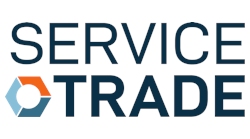Latest from Management
Qualifying and Setting Sales Leads, Part 2
Sponsored
If you are in business or are thinking about going into business, the one thing which you must master is cash flow. The classic definition of cash flow is, basically, the movement of money into and out of your business; it's the cycle of cash inflows and cash outflows that determine your business's solvency. The online article “About Money” notes that poor management of cash flow is the cause of 82 percent of business failures, according to a study performed by Jessie Hagen of U.S. Bank, thus, proper monitoring of cash flow is critical.
Think about that for a moment — 82% of business failures are due to poor cash flow analysis and management. That is sobering to say the least. Taking a start-up business as an example, let's take a close look at how poor cash flow management can cause irreparable harm to the fledgling company.
A craftsman has been working at the trade for some time. He starts filling in his regular job with “side work” and eventually decides he'd like to start his own company. He might start out doing service and repair work, or he might start out doing residential or small commercial work. For the sake of this exercise, we will assume that the new guy has a truck, tools and some type of office either in his home or rented office space. In any case, if he's done his homework, he has a small startup bankroll and acquired the appropriate licensing, insurance, bonding (if needed) and tax accounts (always needed) as well as establishing credit at the supply houses, he's ready to be self-employed. We'll call him ABC Company.
The work is getting done. Our hero has a good receivable collection rate and he starts to see his bank account begin to get a little fatter. Keeping himself bent to his tasks, he manages to pay his bills and make a few dollars for himself. After a while (it could be any amount of time from a few months to a year or more), by being diligent, ABC Company develops a cash surplus. This is the onset of the “danger zone.” That cash surplus should represent profit, but it doesn't always. Financial discipline at this stage of company growth is paramount: it includes the ability of the owner to anticipate cash needs moving forward and to plan for unexpected setbacks as best he can. The “danger” part comes when the owner decides that the cash accruing in his account is (I love this oxymoron) “extra money.” Using his hard earned cash for things like boats, new cars, vacations and the like, outside of what he has allotted for his personal income, is one of the first warning signs of poor cash flow management.
It takes real dedication and discipline on the part of the owner to recognize the need to have and keep cash on hand.
Make no mistake, this is a real problem, and has been the cause of many start-up's demise. It takes real dedication and discipline on the part of the owner to recognize the need to have and keep cash on hand and not be tempted to think that his receivables will cover his needs moving forward. They won't. Profit margins in our industry are not especially high and counting on excess profits to make up a cash shortfall is a fool's errand. I am reminded of the old adage, “we lose a little on each order, but make it up in volume.”
Over the years, I have seen this philosophy explode more times than I'd care to tell. Each time it happens, we all just shake our heads and wonder why. There are many different scenarios for business failures and successes, but by far the two most readily identifiable are like these two companies we will call Rabbit Inc. and Tortoise Inc.
Musical chairs
Rabbit Inc. starts out fast and hot, and gets hotter. Whether it is due to a booming local or national economy, or the owners are really good at getting lots and lots of work doesn't really matter. Rabbit Inc. starts small, but grows rapidly, until it has so much work and is generating so much cash that the owners’ can't find enough places to put it. They expand. They hire people, buy trucks and specialty tools (maybe a backhoe or other expensive pieces of equipment). Rabbit Inc's explosive growth sucks up lots of work. They rent or build an office complex with a large yard, equip their offices with the latest gadgets, purchase large quantities of materials at great discounts and, generally exude the air of a very prosperous company. All while bidding and getting more and more work.
What happens when the music stops and all the chairs are full? That's right, you're out!
Because of their rapid expansion, the owners have never really had to worry about job costing. They just use their surging cash flow to keep on keeping on. They've never had to worry about whether individual projects were profitable or not because they were “making it up in volume.” Basically they were creating a vacuum behind the guise of prosperity and generating cash from new work while paying for it with cash from the other jobs that they were billing on. What they've been doing is playing musical chairs. What happens when the music stops and all the chairs are full? That's right, you're out! Suddenly (it always seems to happen suddenly, doesn't it?) work dries up. Whether they lose jobs from being underbid by competition or the economy begins to cool, everything slows down, including their billing. It doesn't take long for the owner(s) to realize that all that cash flowing through their bank accounts is about to disappear, but their bills don't. In short order, Rabbit Inc. runs out of work and money, but not debt. Inevitably Rabbit Inc. goes bankrupt. In over 50 years in this business, I have watched that very scenario play out many times. It is never pretty.
Tortoise Inc. is a different matter entirely. It starts slowly and grows, also slowly. It's owner(s) appreciates that he needs a solid, reliable cash flow from individual projects and establishes strict job costing for each one. The purpose of job costing individual projects is simple; each job stands alone for either profit or loss. By doing it that way, the owner can see if his estimating and cost analysis is accurate, and he can fine tune those areas to maximize profit across the board. As well, one job cannot jeopardize the company's other projects or interfere too much with the overall cash flow. Ideally, each project should produce a profit, usually projected by the original estimate and augmented by change orders or other addendum. Cash flow is easier to identify and manage because it is compartmentalized by the job. That level of cash control makes it much more likely that Tortoise Inc. will have a chair if the music stops.
Upswings and downturns are more easily absorbed and the owner is able to make the most of his time prospecting for work that suits his business model and not be forced into dog- eat-dog street bidding. A steady, solid growth rate, maximized profits and a good cash flow pretty much ensure that Tortoise Inc. will endure long after Rabbit Inc. has filed Chapter 7 and gone the way of 82% of small businesses.
The Brooklyn, N.Y.-born author is a retired third generation master plumber. He founded Sunflower Plumbing & Heating in Shirley, N.Y., in 1975 and A Professional Commercial Plumbing Inc. in Phoenix in 1980. He holds residential, commercial, industrial and solar plumbing licenses and is certified in welding, clean rooms, polypropylene gas fusion and medical gas piping. He can be reached at [email protected].
Al Schwartz | Founder
The Brooklyn, N.Y.-born author is a retired third generation master plumber. He founded Sunflower Plumbing & Heating in Shirley, N.Y., in 1975 and A Professional Commercial Plumbing Inc. in Phoenix in 1980. He holds residential, commercial, industrial and solar plumbing licenses and is certified in welding, clean rooms, polypropylene gas fusion and medical gas piping.


